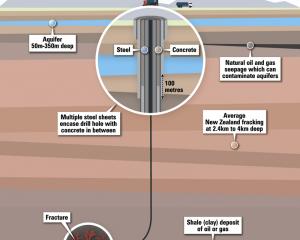More electricity was generated from geothermal sources in the three months to June than at any other time in New Zealand's history, Economic Development Ministry figures reveal.
The New Zealand Energy Quarterly shows 10,831GWh was generated from all sources over the period, about the same as during the corresponding period last year, but that geothermal generation increased by 23%.
The new Nga Awa Purua geothermal plant opened in May, helping the geothermal sector generate more than 1400GWh, or 13% of the country's total electricity output.
Releasing the report yesterday, Energy Minister Gerry Brownlee said geothermal generation was a significant source of electricity and, with a number of new geothermal projects in the pipeline, its influence would continue to grow.
Coal generation dropped 60%, and greenhouse-gas emissions dropped to their lowest level since the June 2000 quarter, as hydro, wind and gas generation increased.
Renewable generation accounted for 73% of the country's electricity generation, the seventh quarter in a row that production exceeded 70%.
Hydro accounted for 55%.
Geothermal production rose as coal production dropped.
More electricity was generated from thermal plants to offset low hydro-lake inflows while winter demand increased.
Geothermal generation was 3.5 times that of coal, and it comprised 15% of the sector's greenhouse-gas emissions.
Coal contributed 17%.
Demand for oil products was at its lowest since 2003, with petrol demand dropping 2% and diesel demand dropping 5%.
At 175.5c per litre, the average regular petrol price was at its highest since the September quarter, when it was 202.5c per litre.
Liquid fuel prices climbed again on July 1, when the transport, energy and industrial sectors entered the emissions trading scheme.
The ministry estimated the scheme should have added another 2.1c per litre to the price of petrol.
Coal demand increased 19%, to 1.5 million tonnes, on the back of some Solid Energy mines ramping up production to supply new customers.
Advertisement






